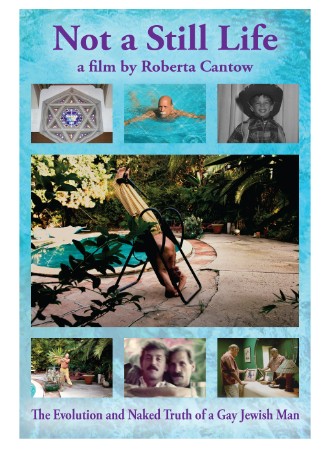
Not a Still Life 2013
Distributed by Original Digital
Produced by Roberta Cantow
Directed by Roberta Cantow
DVD , color, 59 min.
General Adult
Aging, Homosexuality, Gender Identity, Health Sciences, History, Psychology, Religion
Date Entered: 02/19/2015
Reviewed by Jacob Carter, New York State LibraryNot a Still Life is a narrative documentary of the life of Steve Stone, a charismatic gay Jewish man in his sixties. The documentary weaves together the joys and struggles experienced by Stone to create a narrative of his life. In doing so, the film captures the multiple layers of identity and complexity of emotion one individual experienced over the course of a human lifespan. The film is potentially useful as an education tool for academic, clinical, and community settings.
In the film, Stone describes his childhood during the 1950’s, coming out in the 1960s, and the experience of living openly as a gay man through the proceeding decades. Therefore, the film offers some potential for historical use. However, academically, the documentary is best suited to augment health and social science instruction. For example, though emphasis is placed on unconventional aspects of Stone’s life, the film nonetheless reveals features of the stages of psychosocial developmental manifested over the course of the average human lifespan. Stone’s quest to establish an identity and find companionship in his youth is developmentally appropriate during young adulthood. Accomplishments such as establishing a home and his business coincide with the industriousness characteristic of middle adulthood. As an individual inevitably faces tragic loss during late adulthood, personal possessions tend to take on greater significance. This is seen in Stone’s effort to preserve the memory of his partner, who died of AIDS, by retaining a home he was in danger of losing.
Not a Still Life is also potentially useful in clinical and community based settings. The film inspires reflection on the layers of identity people exhibit over the course of the lifespan and is useful for exploring issues of aging as well as an individual’s potential for personal growth. The film, therefore, could potentially enhance in-services for healthcare providers and human services professionals. Community based gay organizations or groups may also find the film useful for promoting intergenerational awareness.
Though Not a Still Life is recommended for the reasons noted above, the fact that Stone’s experiences exemplify only one man’s journey should be taken into consideration when determining if or how to incorporate the film into instruction.